This article is going to be lit! We're taking a look at ceiling lighting design. While it seems obvious your new home is going to need lighting, when it comes to choosing your lights, it's not always as straightforward as it seems it should be. Different lighting fixtures have different purposes and making the correct choices for each room will really allow your lighting to... shine. Let's shed some light on each type of ceiling lighting, their purpose and the best use for each.

The importance of ceiling lighting design in the home
Most of your considerations when choosing new lighting will fall into two key categories: functionality and aesthetics. Certain lighting will fall more into one category than the other but most fixtures will have a balance of both. Choosing the right interior ceiling lights to be installed will help provide quality lighting to your home.
General Ceiling Lighting Design Concepts
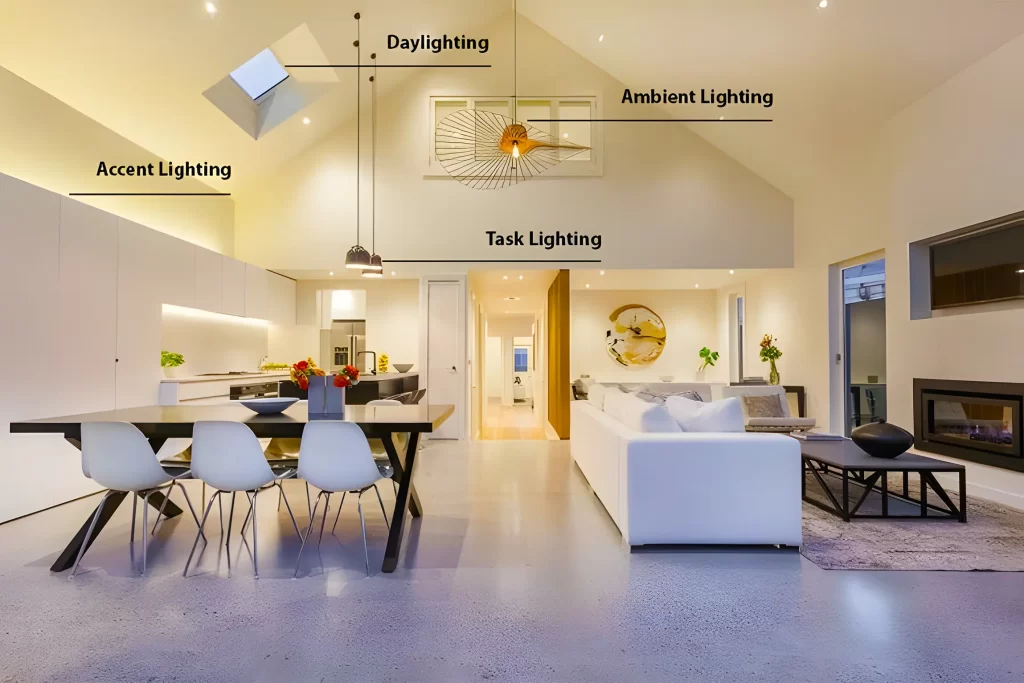
Ambient Lighting
Ambient lighting is about creating the overall illumination of a space. For example, in a dining room or living room, you want to light the entire space rather than somewhere specific. Think of ambient lighting as your general, all-purpose lighting that most rooms need.
Best for:
- Creating Overall Illumination
- Balancing Light Levels in Different Areas
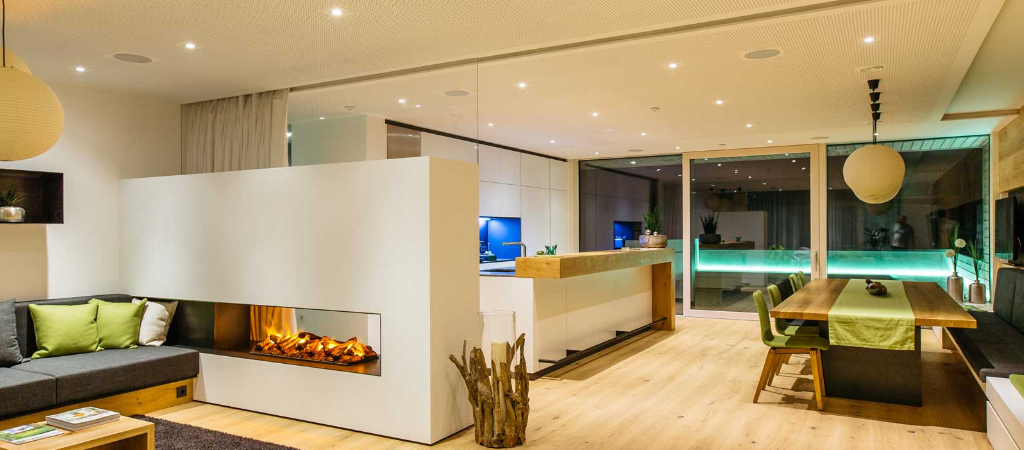
Task Lighting
Task lighting is more focused than ambient lighting and is about creating a focused illumination for specific activities. Just some examples are lighting for the bathroom window, reading, lights for food preparation in the kitchen and lights for a study.
Best for:
- Focused Illumination for Specific Activities
- Enhancing Productivity and Comfort
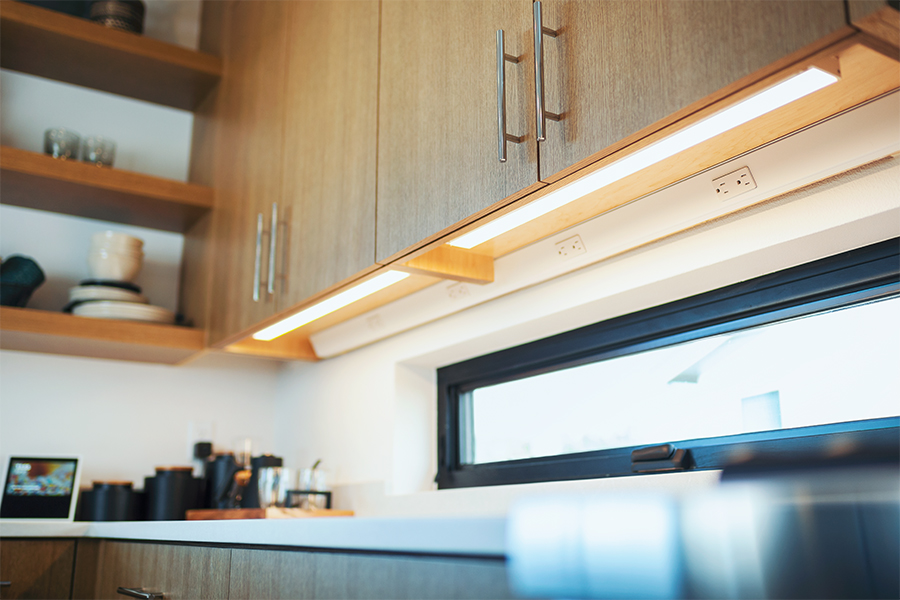
Accent Lighting
Accent lighting is more about aesthetics with its purpose being to light decorative features of your home. It can also be used by designers as a decoration in itself, adding a visual flair to your home.
Best for:
- Highlighting Architectural Features
- Creating Visual Interest
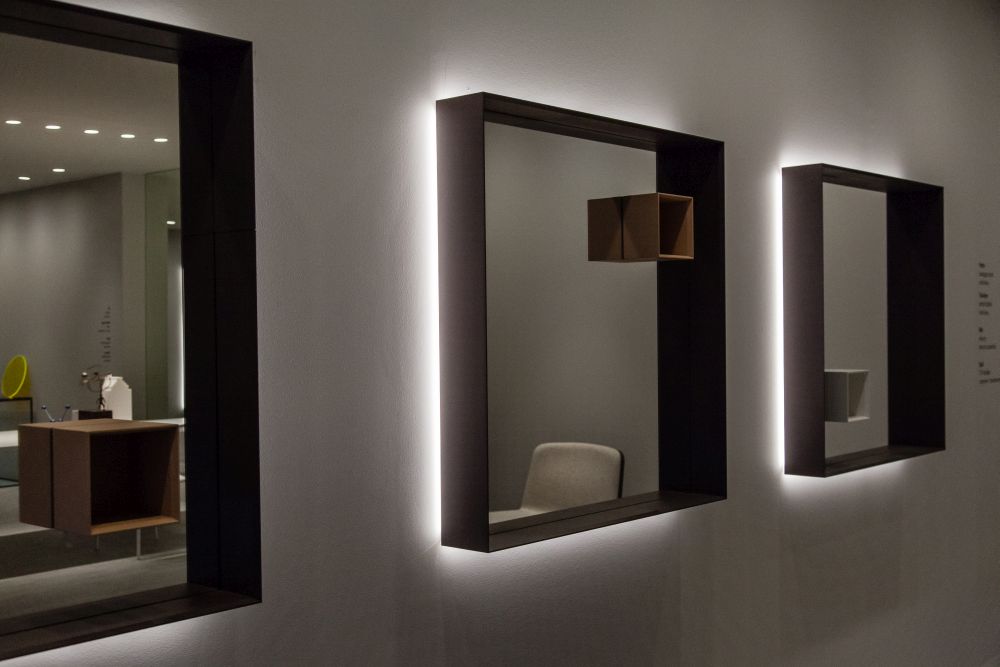
Different Types of Ceiling Lighting Fixtures
Chandeliers
Perhaps the ultimate in statement lighting, chandeliers are a fixture that hangs down from the ceiling and usually has multiple arms. Think of any movie where there's a fancy party in a mansion and there will probably be a chandelier. While a show-stopping feature in the right context, it's not a light fixture that will suit every home.
Pros:
- Adds a luxurious touch to your home.
- Elegant and Statement-Making
- Focal Points in Various Spaces
Cons:
- Expensive to purchase.
- Requires professional installation due to their complexity and sheer weight.
- Need regular dusting and cleaning, otherwise, they'll soon lose that classy vibe and look shabby.

Pendant Lights
The key difference between a chandelier and a pendant light is the latter only has a single light while the former has many. Pendant lights are much more versatile and suit a wider range of home designs.
Pros:
- Versatility in Design and Placement
- Functional and Stylish Options
- Can create a modern style for your home
Cons
- Low-hanging pendant lights are not ideal for low ceilings.
- Require professional installation to ensure proper wiring and that they're hung at the correct height.
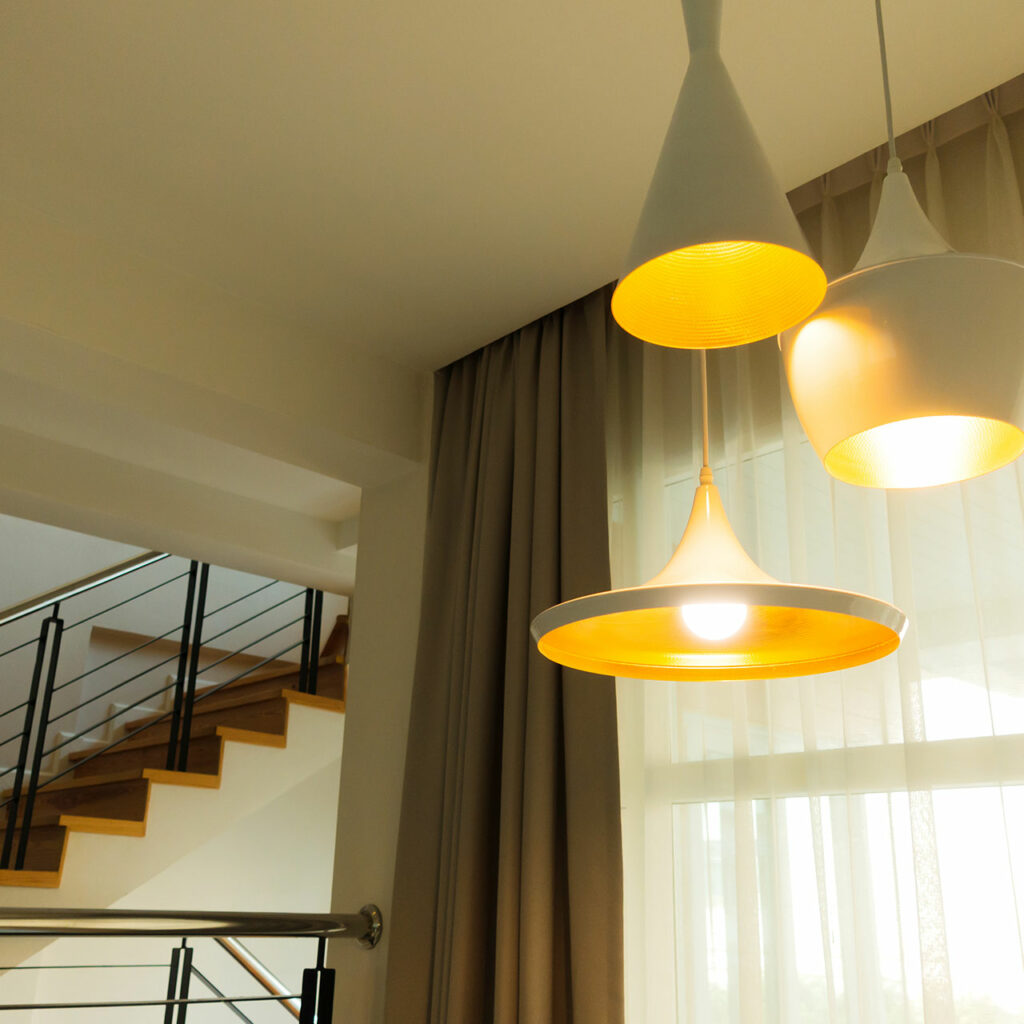
Recessed Lighting
Recessed lighting is fixtures designed to be built into the ceiling itself. They can also be installed on the wall or other surface and can provide task, ambient or decorative writing.
Pros
- Subtle and Space-Saving Illumination
- Ambient and Task Lighting Applications
- Can create a more even lighting
Cons
- Needs more light fixtures to provide adequate light
- Installation can be complicated.
- Not ideal for being the main source of light for a large room.
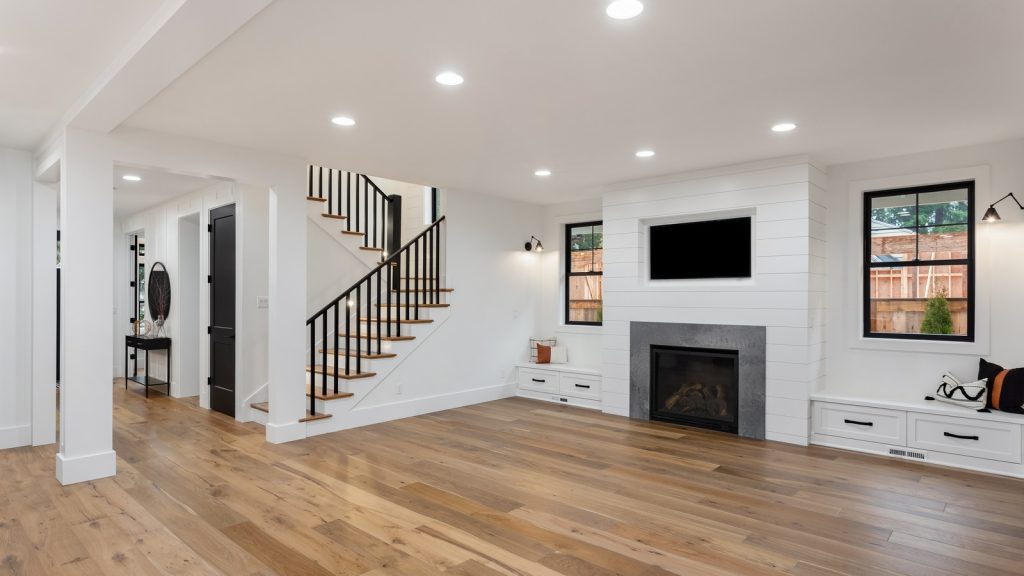
Ceiling Lighting Design Ideas by Room in the Home
Each room in your home has a specific purpose, and your lighting choices need to reflect this. Let's shed some light on the best fixture choices for each room, and the factors you should consider.
Kitchen
Kitchens are one of the most task-heavy areas in your house, so you'll need lighting that accommodates this. This includes lighting over cooking areas and food preparation surfaces. For islands and countertops, a pendant light can serve a practical purpose and as a stylish addition to your kitchen. The sink is often an overlooked space when it comes to lighting, but having task lighting for this area can help with the dishes.
-
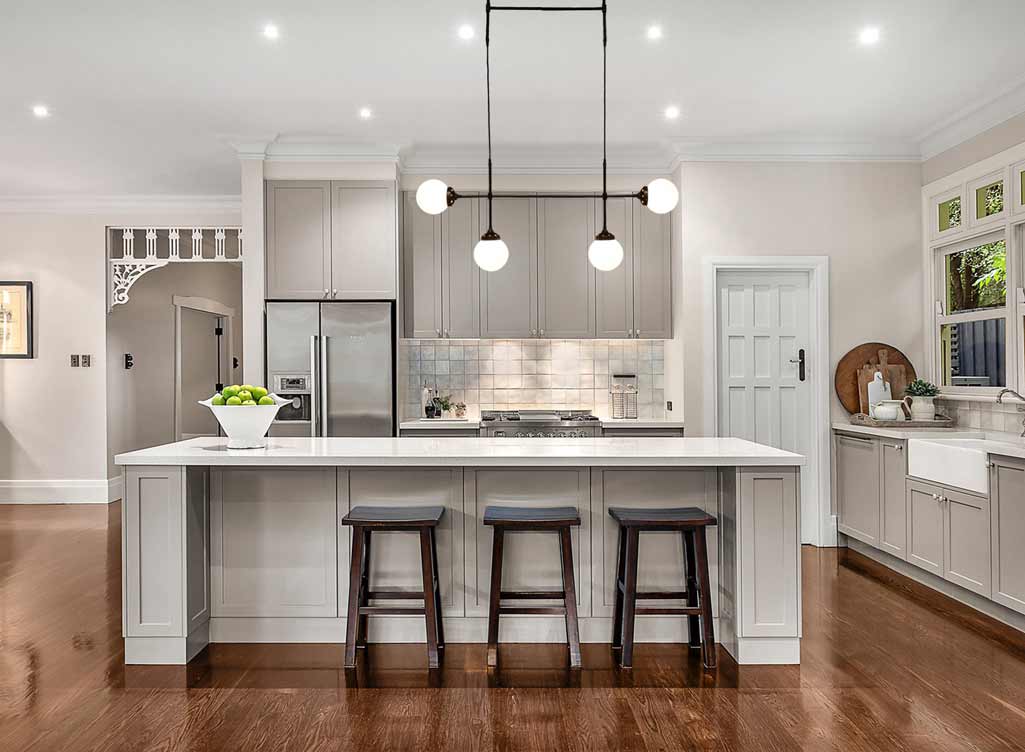
Bedroom
The most important thing you do in your bedroom is sleep, so your lighting choices need to take this into account. For the dominant lighting in the bedroom, consider using bulbs with a warmer, softer tone to help prepare your body for sleep. Bright white LED ceiling lights may have a negative effect on your sleep.
Reading and working in bed is also a popular time for many, so consider including some task lighting as well. This could be a lamp or a light installed in the wall.

Living Room
Layered lighting plays an essential role in the living room. This is due to the much higher likelihood of multiple people being the room doing different things. Also, the living room is one of the most versatile rooms in the house, being able to be used for anything from movie nights to reading to coffee with friends to a space for the kids to do some homework.
Ambient lighting provided by recessed lighting is a great choice in areas like this. Shadows and reflection are going to cause a distraction, so consider bouncing the lighting of the ceiling to reduce this effect. For reading or other tasks, you can install secondary lights or lamps.
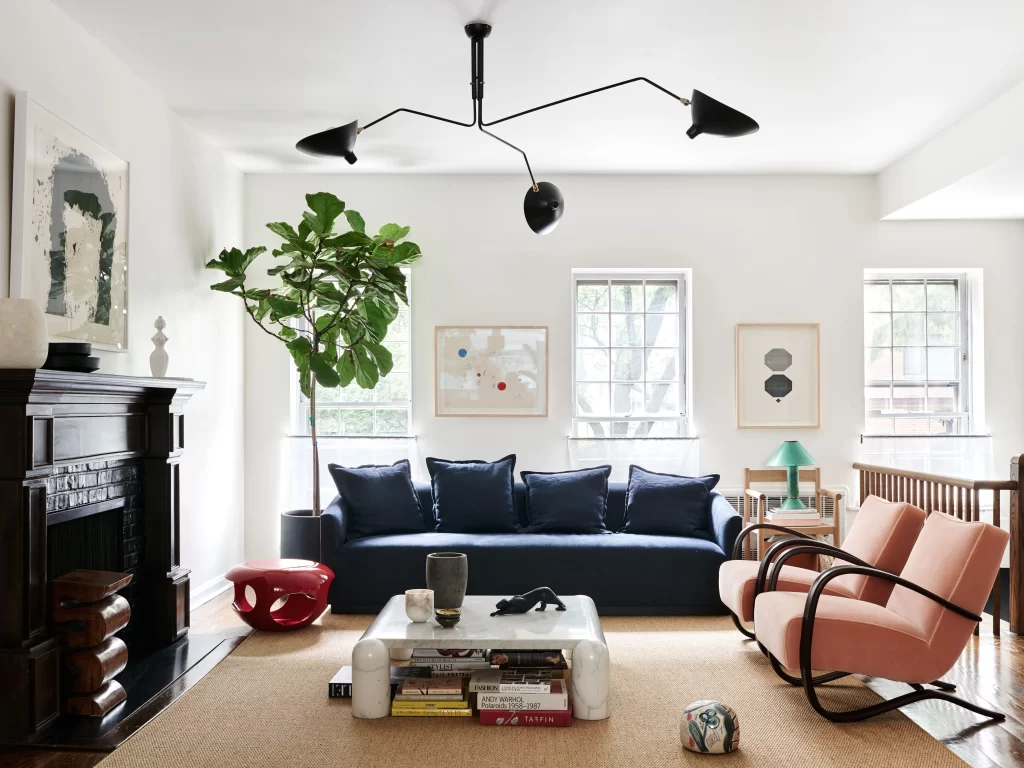
Dining Room
Dining rooms are very social places, whether it's for meals, gatherings or a few drinks with friends. As such, you need great overall ambient lighting and it is a great place for statement lighting. For most houses, this would be the most likely room to go big with a chandelier.

Bathroom
The bathroom requires brighter, task-focused lights, especially around the bathroom mirror. It's where we do a lot of intricate daily tasks from make-up to shaving to checking marks on our face.

Home Office
Like kitchens, a home office or study is primarily for tasks, and therefore you'll need task lighting. Ambient lighting is necessary for the overall illumination of the room.
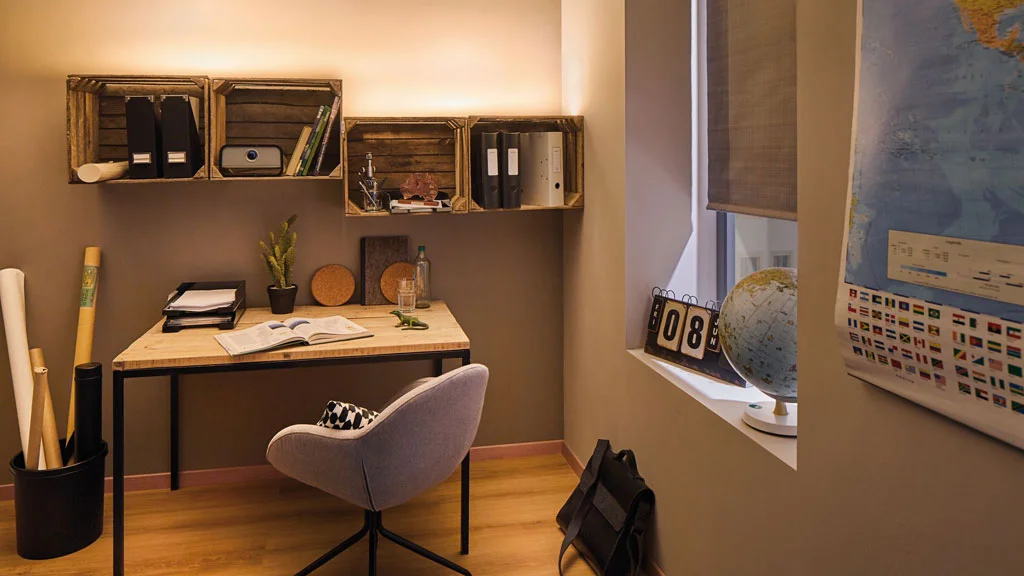
Hallways and Entryways
Hallways and entryways are ideal spaces for motion sensor lighting as these are areas where you'll either have to enter a completely dark home or there will be multiple entrance points, making wall switches less practical.

Smart Lighting Design Integration
Want to take your lighting to the next level with the latest technology? Smart lights have a range of benefits including:
- The ability to control your lights through smart devices
- Interconnectivity.
- Automation to ensure lights aren't left on
- Motion Sensor technology

Key Considerations and tips when creating the perfect ceiling lighting design for your home build
Ceiling Height and Design Compatibility
Before choosing a light fixture, you need to consider what you're hoping to achieve and also the space you're working with. The perfect light for one room will be completely wrong for another, so consider the following:
- What type of lighting does this room need?
- What design suits my decor?
- How much can I afford?
- Do I need multiple sources of light in this room?
- How much room does the ceiling provide?
Installation costs of the ceiling lighting
If any wiring is needed, you're legally required to hire a licensed professional. This is due to safety concerns when it comes to electricity and handling wires. The price of installing new lights will vary depending on the labour involved, the complexity of the job and the type of fixture you wish to have installed.

Energy Efficiency and Sustainability
Lighting can account for a significant amount of your energy bills, so it's worth investing in sustainable options. Modern LED ceiling lights are the best option for energy saving and longevity.

Ceiling Lighting Design Frequently Asked Questions
What type of ceiling light gives the best light?
It's important to remember that the "best light" doesn't necessarily mean the brightest. Depending on the room, there will be completely different needs. A bathroom will need much brighter lights for grooming, brushing teeth, cleaning and make-up. However, having equally bright light in your bedroom could negatively impact your sleep patterns.
What type of lighting is best for high ceilings?
High ceilings provide more flexibility when it comes to the styles of light fixtures you can install. Chandeliers and pendant lights need a little room so people can avoid hitting their heads.



